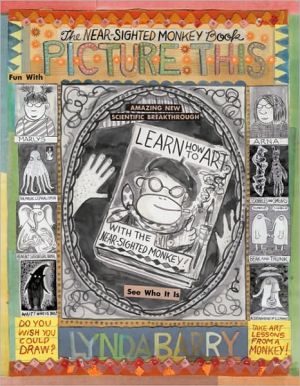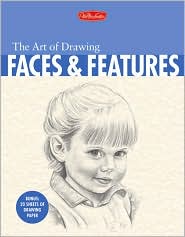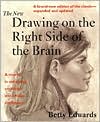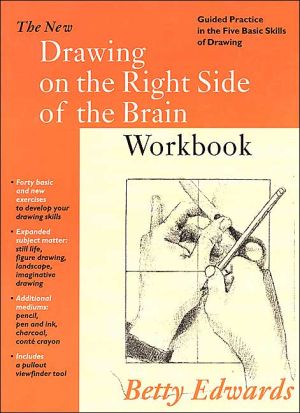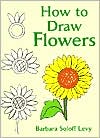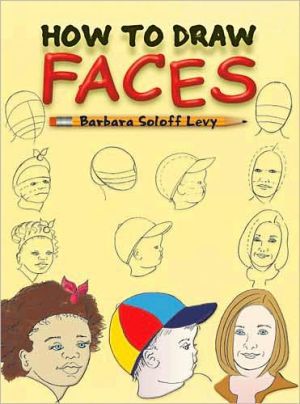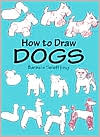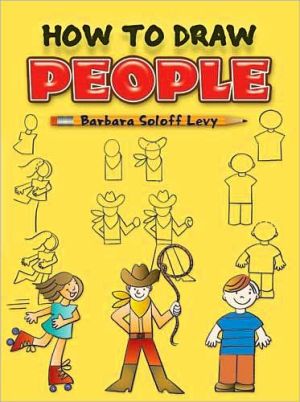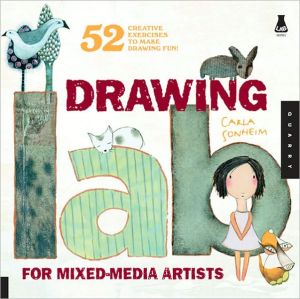Picture This: The Near-sighted Monkey Book
The creative-drawing companion to the acclaimed and bestselling What It Is\ Lynda Barry single-handedly created a literary genre all her own, the graphic memoir/how-to, otherwise known as the bestselling, the acclaimed, but most important, the adored and the inspirational What It Is. The R. R. Donnelley and Eisner Award–winning book posed, explored, and answered the question: “Do you wish you could write?” Now with Picture This, Barry asks: “Do you wish you could draw?” It features the...
Search in google:
The creative-drawing companion to the acclaimed and bestselling What It IsLynda Barry single-handedly created a literary genre all her own, the graphic memoir/how-to, otherwise known as the bestselling, the acclaimed, but most important, the adored and the inspirational What It Is. The R. R. Donnelley and Eisner Award–winning book posed, explored, and answered the question: “Do you wish you could write?” Now with Picture This, Barry asks: “Do you wish you could draw?” It features the return of Barry’s most beloved character, Marlys, and introduces a new one, the Near-sighted Monkey. Like What It Is, Picture This is an inspirational, take-home extension of Barry’s traveling, continually sold-out, and sought-after workshop, “Writing the Unthinkable.”The Barnes & Noble ReviewLynda Barry, the creator of the weekly strip "Ernie Pook's Comeek," is about as invested in raw drawing -- as a practitioner and advocate -- as it's possible to be. Her new book Picture This is a companion piece to her earlier What It Is, which was a sort of illustrated version of her famous "Writing the Unthinkable" workshops; that one was a bunch of images and doodles and personal stories surrounding a set of writing exercises, and this one is a similar framework for drawing exercises. For Barry, though, they're very similar processes; they're all about putting a pen or brush down on paper and moving it until something comes out. Drawing, she claims, is "not something that you are good or bad at. It's something else. You move your hand and you scribble all you want and it feels very good."
\ Publishers WeeklyBarry's follow-up to her critically and popularly acclaimed What It Is focuses on the practice and purpose of drawing. As before, this oversized, full-color book collages comics, drawings, and found images to blend memoir, fiction, and philosophy with workbook-style instruction. Picture This proceeds from the same ideas in Barry's earlier work--which regard creative activity as a necessary extension of childhood play--but may be neater in its marriage of theory and practice. By focusing on drawing as directly as the first book did on writing, this ornately visual book shows the fruits of Barry's practice on every page even as it makes her methods overtly accessible. The book is interspersed with comics narratives including moving autobiographical shorts and sequences featuring her beloved characters Marlys, Maybonne, and Arna, as well as full-page images of her new character: a self-satisfied avatar called "The Nearsighted Monkey," who represents, perhaps, a well-fed creative impulse. A pedagogical sketchbook by a wise and eccentric kindergarten teacher for adults--who is also a fully mature artist--Picture This teaches, nurtures, and encourages without sacrificing the edge that makes art a thrilling journey into the unknown. (Nov.)\ \ \ \ \ Library JournalMany librarians have found themselves at a loss how properly to catalog these companion volumes by renowned comic artist and author Barry. They are ultimately part memoir, part creative workbook, part comic, and part tragic, and while many kids and teens may enjoy them, much of the subject matter is quite mature. Each book deals with drawing pictures and telling stories in varying proportions, and both examine from many angles the notion of keeping visual journals. Barry has said that her goal is to inspire readers, and she succeeds.\ \ \ School Library JournalGr 9 Up—Teens who enjoyed Barry's What It Is (Drawn & Quarterly, 2008) will find more to love in this follow-up. While more reflective than its predecessor, it maintains the earlier work's hybrid formula; it is both a work of art and a work about art, being part picture book, part creative therapy, part step-by-step instruction, and part comic memoir. In one memorable panel, Barry compares an image of a happily scribbling three-year-old to that of a teen who stares sullenly at a blank page. The author asks, "What makes us start drawing? What makes us stop?" To work toward the answers to these questions, she demonstrates how anyone can express who they are through the creation of images, even if those images are nothing more than chickens made of cotton balls. She also elaborates on the power of image-making and how it has supported her throughout her life. Longtime Barry fans will be happy to see the return of Marlys, the outspoken, guileless tween who is arguably her best-known character. Barry herself also appears in the guise of a new doppelgänger, The Near-Sighted Monkey. While the book's unusual nature and indirect messaging will no doubt confuse many, for the right person, Picture This could be a launching pad to a new level of creativity and self-exploration.—Douglas P. Davey, Halton Hills Public Library, Ontario, Canada\ \ \ \ \ Jennifer B. McDonald…taps into…the fuzzy-wuzzy part of the brain that sees elephants in clouds (or in this case, rabbits in water stains)—and asks, "Do you wish you could draw?" In more than 200 pages of riotously distinct collages made with brush and paint, notebook paper, cutouts, tape and glue (with support from the colorist Kevin Kawula and, it seems, a "golden egg"), Barry sets out to show you—no, to remind you of—the pleasures of inking, smudging and, most important, fumbling your way to inspiration.\ —The New York Times\ \ \ \ \ The Barnes & Noble ReviewExcerpted from an essay, by Douglas Wolk, entitled "Comics Raw and Cooked" on The Barnes & Noble Review.\ One way of thinking about drawing style in comics is to reduce it to a single axis: the continuum of styles between "raw" drawing and "cooked" drawing. Those terms are borrowed from Robert Lowell, who, in turn, borrowed them from anthropologist Claude Levi-Strauss and used them in 1960 to describe two competing schools of American poetry. In comics, it's not a competition -- art-comics are a little too collegial for that. But it's easy to reframe Lowell's ideas to describe what cartoonists do. Raw drawing is (or presents itself as) the barely mediated expression of the artist's impulses: it eschews rules and straight-edges, it flows directly out of the brush, it bubbles over with life. Cooked drawing originates in the conscious mind: it's precise and rigorous, with a firm distinction between "correct" and "incorrect" execution, and it's best suited to carefully planned narratives. Raw vs. cooked isn't a useful way to classify most cartoonists; most of them work somewhere between those two poles, and a lot of them change their position on the line from moment to moment. But the Canadian art-comics publisher Drawn & Quarterly has just published a pair of remarkable books that perch near opposite ends of that spectrum.\ Lynda Barry, the creator of the weekly strip "Ernie Pook's Comeek," is about as invested in raw drawing -- as a practitioner and advocate -- as it's possible to be. Her new book Picture This is a companion piece to her earlier What It Is, which was a sort of illustrated version of her famous "Writing the Unthinkable" workshops; that one was a bunch of images and doodles and personal stories surrounding a set of writing exercises, and this one is a similar framework for drawing exercises. For Barry, though, they're very similar processes; they're all about putting a pen or brush down on paper and moving it until something comes out. Drawing, she claims, is "not something that you are good or bad at. It's something else. You move your hand and you scribble all you want and it feels very good."\ As you might guess from that description, Picture This isn't particularly structured, and it's very scribbly. Its interior is in the form of four quarterly issues of an imaginary magazine, and its focus is whatever Lynda Barry feels like drawing that day. (Which means, of course, that it's gorgeous; part of why drawing feels so good to her has to be that funny pictures and wonderful shapes appear where her brush meets the paper.) There are questions meant to spur readers into making marks of their own ("Why do we stop drawing? Why do we start?"); there are panels and strips about Marlys, the pigtailed protagonist of "Ernie Pook's Comeek"; there are pasted-in words and phrases from old magazines and school papers; there are a bunch of images of a character that Barry calls the Near-Sighted Monkey. (Barry's pleasure in drawing it, a kind of ultra-stylized self-portrait, is palpable.) Most of all, there are decorations: hand-scalloped borders, circles and blocks and leaf shapes, flowers and curlicues.\ Barry jokes that "if you use coloring books past the age of ten, you will wreck your imagination forever"; then she provides a bunch of shapes to trace and color and cut out, as well as a diagram to make "a chicken in winter." Is it possible to make the leap from thinking about tracing and cutting out a chicken shape to actually doing it? Not easily: Barry notes over and over that children are willing to take the risk of making pictures in a way that most adults aren't, but maybe the reason for that is that some adults -- like her -- have a gift for it, and others don't. And the suggestion that raw self-expression is not just a universal right but a universal delight is a little disingenuous coming from someone who's so good at it.\ --Douglas Wolk\ \ \
